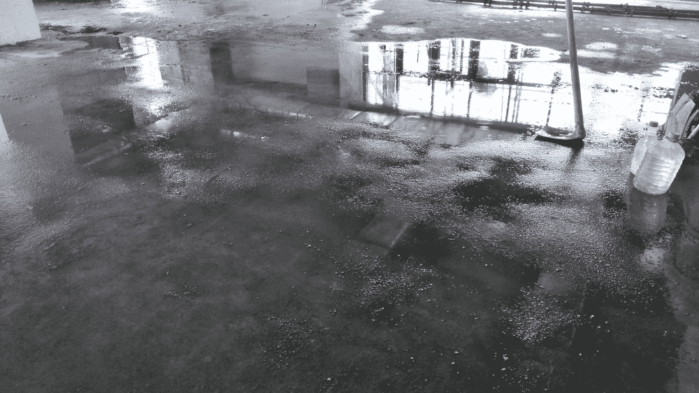

Water curing of floor
Are you more concerned about the effect of moisture in your building or structure? Do you know that the problem might be from dampness or condensation? Do you know the difference between them?
If you don’t know, read this article to the end and you will be informed on how to tell the difference between damp and condensation.
Damp and condensation are both types of the moisture problem that you might be facing. So, find out how to distinguish what type of moisture you have and how to treat it with our no-hassle help from ProGuard Exteriors.
Damp
Damp can be said to Lack of “breathability” and the development of water vapor in our building.
Typically, dampness in the building can be manifested by “stale smelling”, or damp spots that appear around the house.
The causes of the damp problem in the building results from how the structure was developed i.e. if the piping and drainage were done properly. Leaking pipes can cause rising damps and poor drainage or blockage of water flow can also cause the same problem.
More often, you can find buildings and structures near large water bodies experiencing the problem of rising damps more regularly. This damp problem can heavily affect the internal building finish, underlying wood fixtures, and so forth.
Condensation
Condensation occurs when warm air comes in contact with colder, drier air on a surface such as a window. Since air retains moisture, warm air can absorb more moisture than cold air, so that the excess water is released onto the contact surface.
Even though condensation can arise due to an imperfection in the design of the property, e.g. inadequate ventilation due to blockage, etc. Most of the reasons for condensation in the buildings are in the way of life of the occupants.
Condensation is clear when it appears on the most popular impervious surfaces, such as window glass, cold water pipes, and clay tiles; it will also be common on any surface that is lower than the dew point. The presence of condensation on more permeable surfaces (such as mortar or background) is undeniable when glitches, damage, or mold development frames appear on that surface.
The lack of proper heating or efficient venting of steam from kitchens and toilets can cause condensation. This is usually the major cause of condensation in buildings. So, if you are treating the problem, you can start by looking for heating, and ventilation.
So, how do you tell the difference?
Some people sometimes talk about damp and condensation as if they were different things, to be honest, condensation is a type of damp. When treating damp, you must be able to tell the difference between damp and condensation and also the different types of problem sources, for example, groundwater, leakages, and floods.
While some damp can be reversed, others can cause permanent damage to your home.
Conclusion
Staying away from the damp and condensation in your building is really about a reasonable mix of legitimate warming, drainage, and ventilation. If you get a qualified company such as an advance damp proofing company, everything should be cared for.

